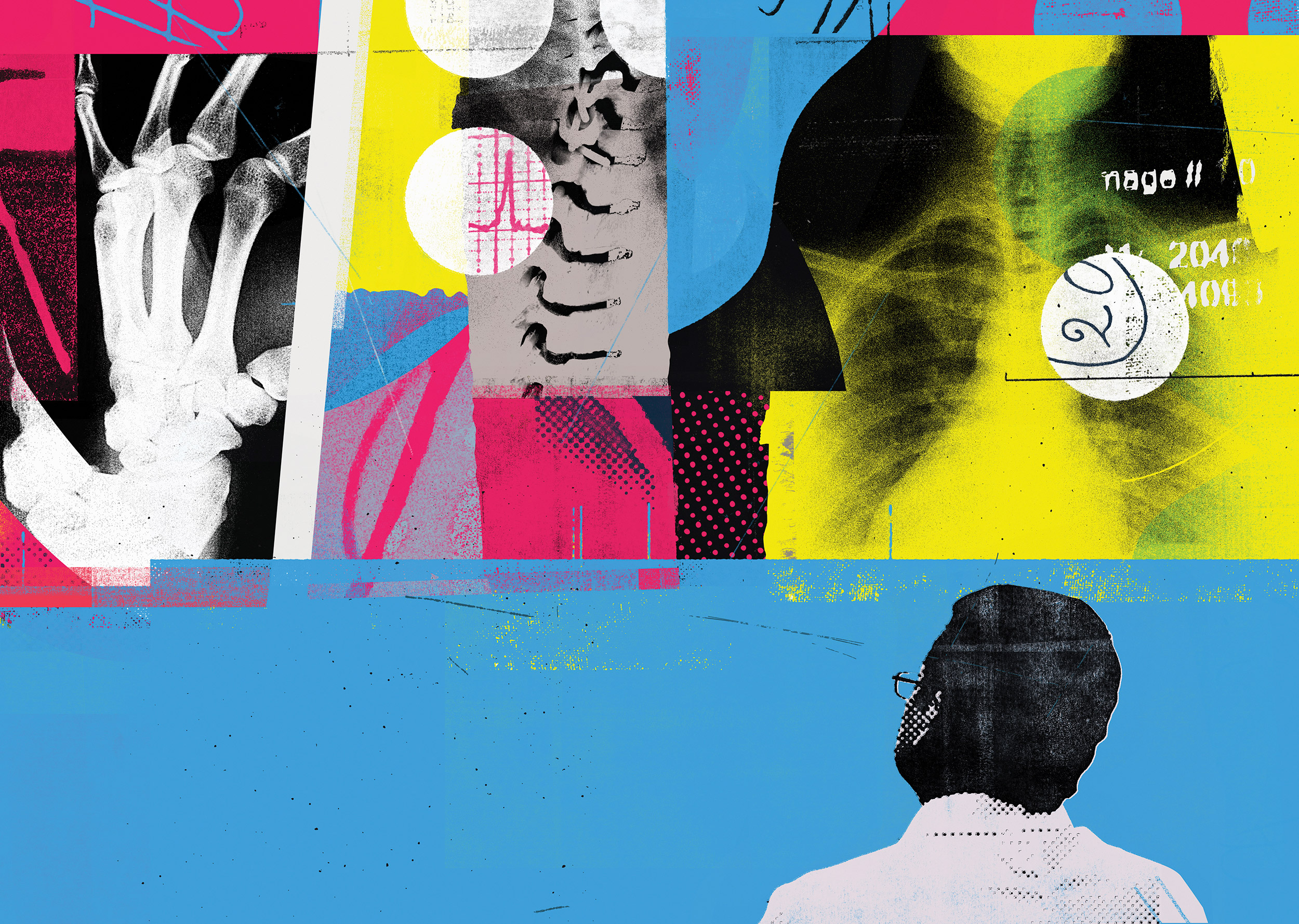
Illustration by Stuart Kinlough/Ikon Images
Part of the Wondering series
A series of random questions answered by Harvard experts.
Fernando Rodriguez-Villa, an assistant professor of psychiatry at Harvard Medical School and a faculty member in the MGH-McLean Adult Psychiatry Residency Training Program, is the director of a course called “The Developing Physician,” which includes instruction on sharing difficult diagnoses with patients. We asked him how he guides future doctors through tough conversations.
One of the things that we do in the course is we have simulated patients and faculty observing a student deliver bad news. We have two scenarios — one is a man, one is a woman. It’s basically that the cancer has come back and the student has to figure out a way to deliver the news to this person in 20 minutes or so.
Active listening is not just listening, but probing and trying to understand what their emotional response to this news is, as best as one can.
Oftentimes, medical students will resort to medical language. “Metastases,” for example: Not everybody knows what that means. I had one student who was talking about the bone scan showing some opacities. Well, what does that mean to a patient? Basically what they need to convey is that your cancer is back and that’s what these tests show.
I’ve had students totally derailed with a whole discussion about what bone scans actually measure, getting into the whole technical aspect of it. The more you delay, the less time you’ll have to help the person as they react. After you’ve actually gotten around to delivering the news, hopefully in a way that was empathic, you need to allow time and space for the patient.
Active listening is not just listening, but probing and trying to understand what their emotional response to this news is, as best as one can. And you’ll hear all kinds of versions. The patient will say they’re angry; they’ll be confused; they’ll be surprised; they’ll be sad.
What you want to give the patient is, one, clarity. But also the sense that this practitioner, this student, this person really made an effort to understand the impact of this news. You are going to be with them. The next step is figuring out who else is in the patient’s life, assessing what the supports are — where are you going to go, who are you going home to? The idea is that the person leaves the appointment feeling like they aren’t going to be alone.
As faculty and physicians, these conversations are among the things that we struggle with the most, no matter how long we do it. It doesn’t get any easier.
This past week one of the students told me, before we met with the simulated patient, that her mother had just recently been diagnosed with breast cancer. She said, “I don’t know how this is going to go. It’s a little bit too close to home.” But she seemed really committed to wanting to do it, and it felt important to let her. And she was really quite masterful at how she did it. Maybe the lived experience gave her an added element of empathy.
We try to be thoughtful about this. Educators and the medical establishment are not just trying to throw students out there and say, “OK, go out there and do it.” We really are trying to do better not only by our students, but also the patients and their families.
— As told to Anna Lamb/Harvard Staff Writer















